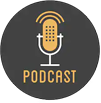Improving Hearing Health in Friendswood: Expert Audiology Care and Hearing Aid Solutions
Nov 14, 2025Expert Audiologist Services and Advanced Hearing Aid Solutions to Improve Hearing Health in Friendswood TX
Hearing healthcare in Friendswood means more than correcting volume—it restores communication, safety, and quality of life through expert audiology services and modern hearing-device solutions. This article explains how local audiology care identifies hearing loss early, the testing methods used to diagnose different conditions, and the range of advanced hearing aid technologies available in 2025 that improve speech clarity and daily function. Many residents notice subtle changes such as difficulty following conversations or persistent tinnitus; understanding these signs and the clinical pathway to diagnosis helps people act sooner and protect cognition and social engagement. Readers will find practical guidance on comprehensive hearing tests, a comparison of rechargeable, invisible, and AI-powered hearing aids, evidence-based tinnitus management, and everyday prevention strategies including custom ear protection. Where appropriate, the text also points to Friendswood-based access for diagnostic testing, fitting, and follow-up care so residents know how professional services differ from over-the-counter options. By the end, you’ll have clear next steps for evaluation, device selection, and prevention tailored to Friendswood lifestyles and noise exposures.
What Are the Signs and Symptoms of Hearing Loss in Friendswood Residents?
Hearing loss often begins subtly with difficulty distinguishing speech in noisy environments, and it progresses because auditory input is reduced and the brain must work harder to interpret sounds. Early identification matters because timely audiology care can restore audibility, reduce listening fatigue, and lower risks associated with social isolation and cognitive strain. Recognizing warning signs helps residents seek evaluation earlier, and professional testing clarifies whether hearing aids, medical treatment, or protective strategies are appropriate. The next section lists the most common clinical and everyday symptoms so you can self-screen and decide when to schedule an assessment.
Many Friendswood residents notice signs that are easy to overlook:
- Difficulty following conversations in restaurants, family gatherings, or church services.
- Turning up TV or phone volume higher than others find comfortable.
- Frequently asking people to repeat themselves during phone or in-person calls.
- Struggling to hear consonants, especially “s,” “f,” “th,” or “k,” which makes speech sound muffled.
- Persistent ringing, buzzing, or whooshing sounds (tinnitus) that interfere with sleep or concentration.
- Feeling mentally exhausted after social events because listening takes extra effort.
These symptoms form a clear checklist for when to pursue professional testing and early intervention, and they often precede measurable changes on an audiogram.
How Can You Recognize Early Hearing Loss Symptoms?
Early hearing loss often shows up in specific daily scenarios—missing words on the phone, needing subtitles during TV shows, or finding background noise overwhelming in grocery stores or playgrounds. Self-check questions can help: do you struggle to hear in a noisy restaurant, or does speech sound clearer to you in one ear than the other? Family and friends often notice changes before the person affected does, so reports of repeated misunderstandings or volume complaints are strong prompts to test. If you recognize two or more of these signs, scheduling a diagnostic hearing screen in Friendswood gives objective data and tailored next steps. Understanding these early patterns makes it easier to choose appropriate treatments or protective measures before communication declines further.
What Impact Does Untreated Hearing Loss Have on Quality of Life?
Untreated hearing loss increases cognitive load because the brain reallocates resources to decode sounds, which can lead to mental fatigue, reduced work performance, and social withdrawal over time. Recent research and public health guidance link hearing impairment to higher risks of loneliness, depression, and accelerated cognitive decline when unaddressed. The practical impacts include missed conversational cues, reduced enjoyment of community events, and safety risks such as not hearing alarms or traffic while walking. Early diagnosis and intervention with audiology services and appropriate devices can mitigate these downstream effects by restoring audibility and improving conversational confidence, which supports overall well-being and social participation in Friendswood neighborhoods.
How Do Expert Hearing Tests in Friendswood Diagnose Hearing Conditions?
A comprehensive hearing evaluation in Friendswood combines a clinical interview, ear inspection, and objective and behavioral tests to determine the type and degree of hearing loss and to guide treatment. Professional diagnostics reveal whether loss is sensorineural, conductive, or mixed, and they quantify speech understanding and middle-ear function to inform medical referral or device fitting. Compared with over-the-counter screenings, expert testing uses calibrated equipment, audiometric thresholds, and verification methods that directly influence clinical decisions and long-term outcomes. Below is an overview of core diagnostic tests commonly performed during a full evaluation.
Before presenting the tests, here is a concise table summarizing common diagnostic procedures and their clinical purpose.
This table clarifies how each test contributes unique diagnostic information that together define the clinical picture and treatment pathway.
What Happens During a Comprehensive Hearing Test?
A comprehensive evaluation begins with medical and hearing history to identify risk factors such as noise exposure, medications, or medical conditions, followed by otoscopic ear inspection for wax or structural issues. Next, pure-tone and speech audiometry measure thresholds and word recognition across frequencies, while tympanometry checks middle-ear function; objective tests like OAE or ABR are added when needed for diagnostic clarity. Testing typically takes 45–90 minutes depending on complexity, and results are reviewed with counseling that explains the audiogram, communication strategies, and treatment options. This stepwise approach ensures that findings lead directly to appropriate medical referrals, hearing aid recommendations, or rehabilitative plans tailored to daily life in Friendswood.
Which Types of Hearing Loss Can Be Detected Through Testing?
Testing differentiates three primary categories: sensorineural (inner ear or nerve), conductive (outer/middle ear mechanics), and mixed loss (both elements). Pure-tone audiometry shows characteristic patterns—sensorineural loss often produces sloping high-frequency deficits while conductive loss features air-bone gaps on combined testing. Tympanometry and otoscopy help identify treatable conductive causes such as fluid, perforation, or eustachian tube dysfunction, which may require medical or surgical care rather than amplification. Knowing the type of loss is critical because it determines whether the pathway is medical management, hearing aids, or both, and it sets expectations for device outcomes and rehabilitation.
What Advanced Hearing Aid Solutions Are Available in Friendswood?
Modern hearing aids combine form factors and intelligent processing to match users’ lifestyles, offering options such as rechargeable power systems, discreet invisible fits, and AI-powered adaptive sound processing that learns wearer preferences. Connectivity advances like Bluetooth LE Audio and Auracast-compatible streaming are becoming mainstream in 2025, allowing seamless connection to phones, TVs, and assistive listening in public venues. Local Friendswood audiologists offer fitting and programming services that customize devices to your audiogram and real-ear measurements, which improves speech clarity more reliably than factory default settings. The next subsections compare common device classes and outline the fitting and verification workflow used by professionals.
Before the detailed comparisons, review this EAV-style table that contrasts typical device classes and primary attributes.
This comparison highlights trade-offs: rechargeable models favor convenience, invisible devices prioritize cosmetics, and AI-enabled aids focus on adaptive listening benefits.
What Types of Hearing Aids Are Offered: Rechargeable, Invisible, and AI-Powered?
Rechargeable hearing aids remove the need for frequent battery replacement and often provide a full day of use with a single overnight charge, which is ideal for active households and travel. Invisible-canal devices sit deep in the ear and are cosmetically discreet, making them attractive for people who prioritize low visibility; however, very small fits can limit wireless features and maximum power. AI-powered hearing aids employ adaptive algorithms to differentiate speech from noise, learn user preferences, and dynamically adjust gain and directionality to improve speech-in-noise performance. Choosing among these depends on hearing loss severity, dexterity, lifestyle needs, and the importance of features like streaming or tinnitus masking, which local audiologists can help prioritize.
The effectiveness of hearing aid fitting is significantly enhanced by precise calibration.
Hearing Aid Fitting: Importance of Real-Ear Measurements for Optimal Outcomes
Routine verification of aided hearing responses using real-ear measurements (REM) is part of recommended practice,1-3and failing to verify hearing aid fittings using this technique has been listed as the number one mistakemade by clinicians.4Research has revealed positive listening outcomes for patients fitted using best practice REM verification versus first-fit approaches in both lab-based and real-world environments.5-8
A comparison of automated real-ear and traditional hearing aid fitting methods, P Folkeard, 2018
How Does the Hearing Aid Fitting and Programming Process Work?
Fitting begins with an evidence-based prescription derived from the audiogram and includes taking ear impressions when custom shells are needed, followed by device programming to target prescribed gain across frequencies. Verification uses real-ear measures to confirm that amplification meets prescriptive targets in the wearer’s ear canal rather than relying on manufacturer defaults, and behavioral fine-tuning adjusts settings for comfort and clarity. Follow-up visits typically occur within weeks to weeks/months to optimize performance; remote programming (teleaudiology) and smartphone apps increasingly allow incremental adjustments between clinic visits. Proper verification and ongoing counseling are what separate successful outcomes from devices left unused in a drawer.
How Is Tinnitus Managed and Treated by Friendswood Audiologists?
Tinnitus management begins with assessment to identify potential causes and red flags, then proceeds with individualized strategies that may include sound therapy, hearing aids with masking features, cognitive approaches, and referral for medical workup when indicated. Many patients benefit from multi-modal care that concurrently treats hearing loss and reduces tinnitus perception through amplification or targeted sound enrichment. Local audiology services in Friendswood provide assessments to rule out treatable conditions and to design personalized management plans that address sleep, concentration, and emotional responses.
Below are concise cause and treatment lists to clarify typical clinical pathways.
- Noise-induced cochlear damage from occupational or recreational exposure.
- Age-related (presbycusis) changes in inner-ear function and neural processing.
- Ear conditions such as cerumen impaction, middle-ear disease, or ototoxic medication effects.
These cause categories guide whether the initial approach is medical evaluation, wax removal, hearing amplification, or behavioral therapy.
What Are the Common Causes and Symptoms of Tinnitus?
Tinnitus typically presents as ringing, hissing, or buzzing perceived in one or both ears and can vary in loudness and pitch, often becoming more noticeable in quiet environments or at night. Common causes include noise exposure, age-related cochlear degeneration, earwax obstruction, and certain medications that affect inner-ear function; non-auditory causes like vascular or neurological conditions sometimes require medical evaluation. Red flags—sudden onset, unilateral tinnitus with hearing loss, or pulsatile tinnitus—warrant prompt medical referral. Identifying the probable etiology during assessment directs whether management will focus on amplification, sound therapy, or medical/surgical investigation.
Which Treatment Options and Therapies Are Available Locally?
Friendswood audiologists use a spectrum of evidence-based approaches including sound therapy (masking or enrichment), hearing aids with built-in tinnitus features, tinnitus retraining therapy (TRT), and counseling or cognitive behavioral techniques to reduce distress and improve coping. Sound-based approaches use customized broadband noise or nature sounds to reduce the perceived loudness and shift attention away from tinnitus, while hearing aids restore audibility and often reduce tinnitus by improving environmental input. Counseling and CBT-style strategies address the emotional and attentional components of tinnitus, enhancing habituation and quality of life. For cases with medical red flags, audiologists coordinate referral to ENT specialists for further evaluation.
Why Choose Our Friendswood Hearing Clinic for Personalized Audiology Care?
Our Friendswood hearing clinic focuses on patient-centered evaluation and evidence-based device selection, combining thorough diagnostics with follow-up care to maximize daily communication and satisfaction. Local presence means timely appointments for testing, fitting, and adjustments, and ongoing support that blends in-person and teleaudiology options where appropriate. Below is a compact table summarizing core services and the patient benefits they deliver.
This service overview shows how coordinated diagnostics, device verification, and ongoing support improve outcomes compared with one-time sales or OTC solutions.
What Makes Our Audiologists Experts in Hearing Health?
Audiologists in Friendswood hold clinical training in audiology and apply standard-of-care protocols such as evidence-based prescriptive fitting and real-ear verification to ensure devices meet individual needs. They maintain competencies in pediatric and adult assessments, tinnitus management, and modern hearing-aid technologies including AI-driven algorithms and wireless streaming. Continuous professional development and collaboration with ENT specialists ensure that patients are referred for medical evaluation when indicated, and that rehabilitation plans incorporate aural rehabilitation, counseling, and assistive listening strategies. These clinical practices translate into reliable care pathways that prioritize communication outcomes and long-term hearing health.
The field of audiology is rapidly evolving with technological advancements.
AI in Audiology: Enhancing Hearing Aids and Diagnostic Outcomes
Artificial intelligence (AI) holds transformative potential in audiology, enhancing diagnostic, therapeutic, and rehabilitation outcomes. This review explores the applications of AI in hearing aids, cochlear implants, sign language recognition, and tele-audiology.
AI-Driven Innovations in Hearing Health: A Review of Artificial Intelligence Applications in Audiology and Hearing Technologies, 2025
How Have Friendswood Patients Benefited from Our Hearing Solutions?
Patients report improved conversational clarity in families, reduced listening fatigue at work or social events, and measurable reductions in tinnitus intrusiveness when amplification or sound therapy is applied appropriately. Practical outcomes include better phone communication, greater participation in group activities, and restored confidence when driving or attending community events. The clinic emphasizes education and realistic expectations: initial adaptation is normal, but systematic follow-up and programming typically yield meaningful improvements in speech understanding and daily functioning. These outcome-focused processes ensure treatment aligns with each person’s goals and lifestyle in Friendswood.
How Can Preventative Hearing Care Protect Your Hearing Health in Friendswood?
Preventative care reduces the risk of noise-related hearing damage and preserves communication through simple behavioral changes, workplace controls, and periodic screening to catch decline early.
Consistent use of protection in high-noise settings, volume limits on personal audio devices, and routine hearing checks for at-risk individuals form the backbone of community hearing health.
The following sections and lists outline specific measures and practical advice for everyday life in Friendswood.
A practical list of prevention strategies includes the following measures:
- Lowering device volume to 60% or using volume-limiting features when possible.
- Wearing hearing protection during mowing, concerts, or recreational shooting.
- Taking regular quiet breaks from noisy environments to allow recovery.
- Scheduling periodic hearing checks if you have high noise exposure or family history.
What Lifestyle Changes and Protective Measures Reduce Hearing Loss Risk?
Adopting safe-listening behaviors such as limiting duration and volume of headphone use, choosing quieter venues, and using hearing protection during lawn care or power tools significantly lowers cumulative cochlear damage risk. Regular hearing checks—especially for those in noisy jobs, musicians, or older adults—catch declines early so interventions can be started before communication is impaired. Managing cardiovascular health, avoiding ototoxic medications when alternatives exist, and reducing head/ear trauma also contribute to long-term auditory resilience. Implementing these lifestyle changes together creates layered protection that sustains hearing health across decades.
How Do Custom Ear Plugs and Noise Protection Help in Everyday Life?
Custom ear plugs provide superior fit, comfort, and fidelity compared with generic foam plugs, making them ideal for musicians, frequent concertgoers, and workers exposed to industrial noise; they reduce harmful sound levels while preserving speech clarity. Off-the-shelf protectors are useful for occasional exposure but may offer inconsistent attenuation and discomfort over long use. Custom solutions can be tuned for specific attenuation profiles (flat for musicians, higher for shooting) and fitted with filters or musician plugs to maintain sound quality. Proper selection, fitting, and maintenance prolong device lifespan and ensure effective protection in varied Friendswood activities.
This article has covered signs of hearing loss, diagnostic testing, contemporary hearing-aid options, tinnitus management, clinic services, and prevention strategies tailored to Friendswood residents. If you recognize symptoms or need a device fitting, scheduling a professional diagnostic evaluation with local audiology services is the next step toward improved hearing health and daily communication.


